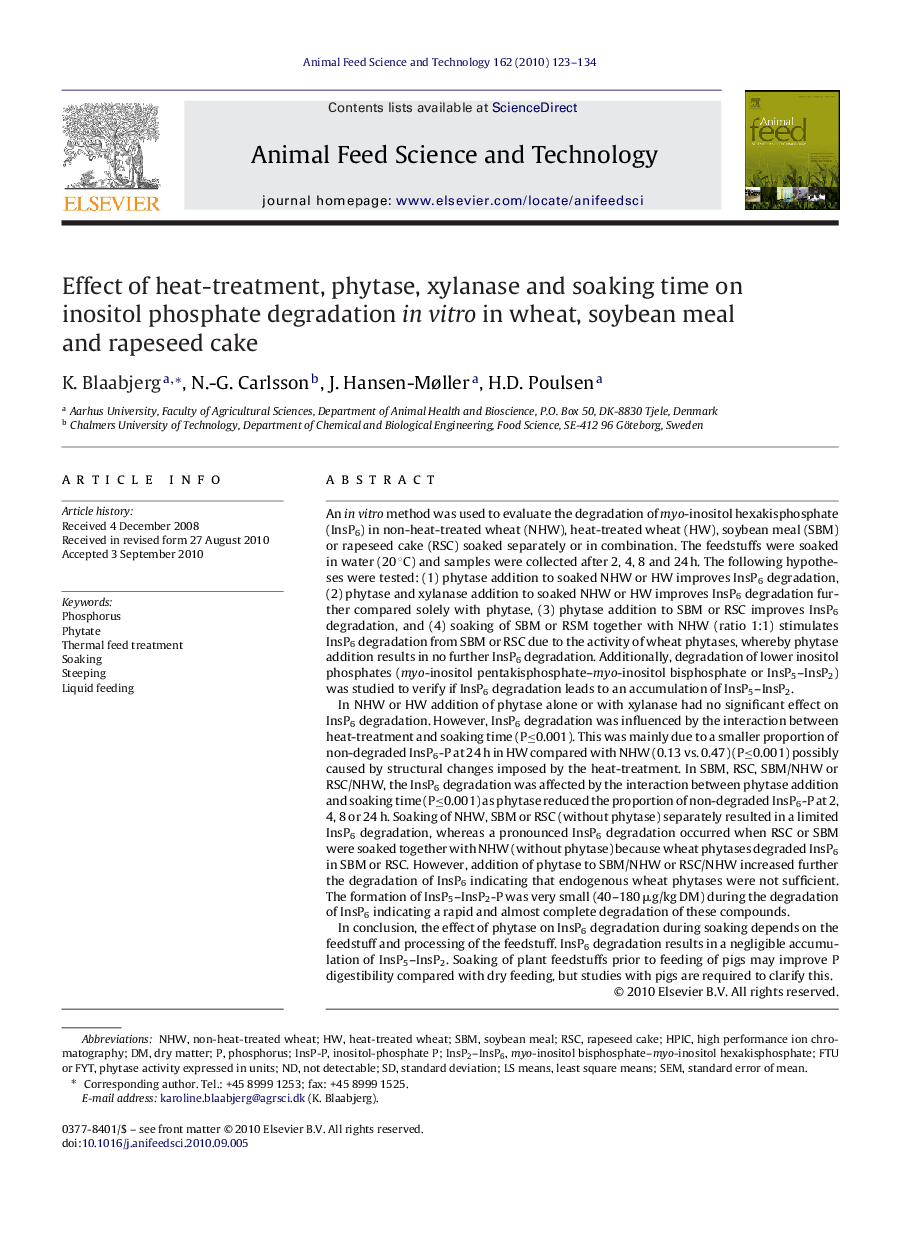| کد مقاله | کد نشریه | سال انتشار | مقاله انگلیسی | نسخه تمام متن |
|---|---|---|---|---|
| 2420054 | 1552436 | 2010 | 12 صفحه PDF | دانلود رایگان |

An in vitro method was used to evaluate the degradation of myo-inositol hexakisphosphate (InsP6) in non-heat-treated wheat (NHW), heat-treated wheat (HW), soybean meal (SBM) or rapeseed cake (RSC) soaked separately or in combination. The feedstuffs were soaked in water (20 °C) and samples were collected after 2, 4, 8 and 24 h. The following hypotheses were tested: (1) phytase addition to soaked NHW or HW improves InsP6 degradation, (2) phytase and xylanase addition to soaked NHW or HW improves InsP6 degradation further compared solely with phytase, (3) phytase addition to SBM or RSC improves InsP6 degradation, and (4) soaking of SBM or RSM together with NHW (ratio 1:1) stimulates InsP6 degradation from SBM or RSC due to the activity of wheat phytases, whereby phytase addition results in no further InsP6 degradation. Additionally, degradation of lower inositol phosphates (myo-inositol pentakisphosphate–myo-inositol bisphosphate or InsP5–InsP2) was studied to verify if InsP6 degradation leads to an accumulation of InsP5–InsP2.In NHW or HW addition of phytase alone or with xylanase had no significant effect on InsP6 degradation. However, InsP6 degradation was influenced by the interaction between heat-treatment and soaking time (P≤0.001). This was mainly due to a smaller proportion of non-degraded InsP6-P at 24 h in HW compared with NHW (0.13 vs. 0.47) (P≤0.001) possibly caused by structural changes imposed by the heat-treatment. In SBM, RSC, SBM/NHW or RSC/NHW, the InsP6 degradation was affected by the interaction between phytase addition and soaking time (P≤0.001) as phytase reduced the proportion of non-degraded InsP6-P at 2, 4, 8 or 24 h. Soaking of NHW, SBM or RSC (without phytase) separately resulted in a limited InsP6 degradation, whereas a pronounced InsP6 degradation occurred when RSC or SBM were soaked together with NHW (without phytase) because wheat phytases degraded InsP6 in SBM or RSC. However, addition of phytase to SBM/NHW or RSC/NHW increased further the degradation of InsP6 indicating that endogenous wheat phytases were not sufficient. The formation of InsP5–InsP2-P was very small (40–180 μg/kg DM) during the degradation of InsP6 indicating a rapid and almost complete degradation of these compounds.In conclusion, the effect of phytase on InsP6 degradation during soaking depends on the feedstuff and processing of the feedstuff. InsP6 degradation results in a negligible accumulation of InsP5–InsP2. Soaking of plant feedstuffs prior to feeding of pigs may improve P digestibility compared with dry feeding, but studies with pigs are required to clarify this.
Journal: Animal Feed Science and Technology - Volume 162, Issues 3–4, 22 December 2010, Pages 123–134